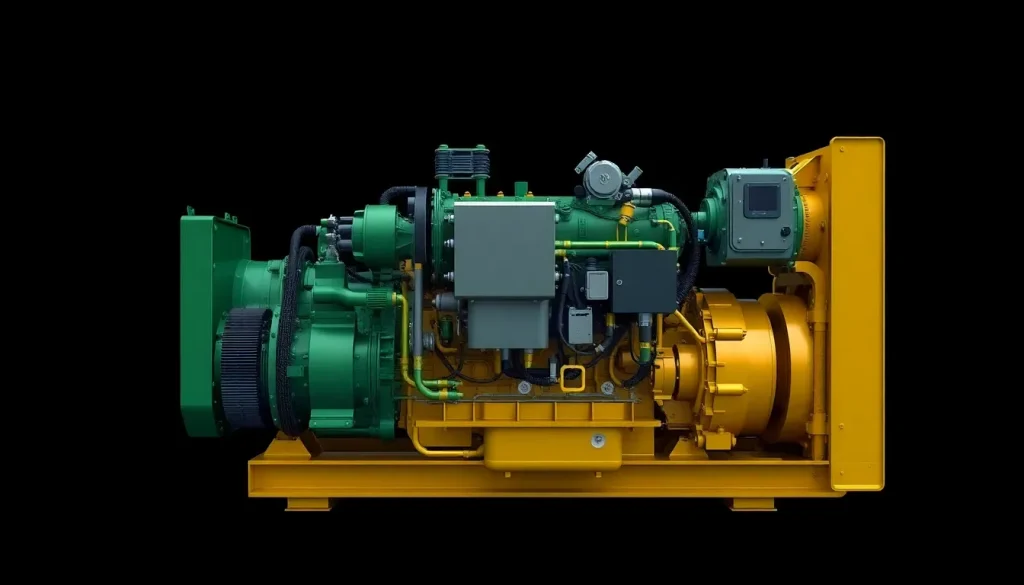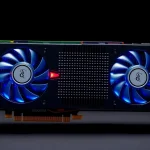Messy Middle Fleet Demo Showcases Diverse Powertrain Solutions

In a rapidly evolving landscape of transportation, the quest for sustainable solutions in trucking is gaining momentum. The Messy Middle Fleet Demonstration is an ambitious initiative that showcases various powertrain technologies in real-world conditions, providing insights into the future of long-haul trucking. This article delves into the details of this demonstration, highlighting the participating fleets and the preparations that led to this significant event.
Overview of the Messy Middle Fleet Demonstration
The North American Council for Freight Efficiency (NACFE) initiated the Messy Middle fleet demonstration, which began tracking 13 different fleets on September 8 as part of the Run on Less initiative. This demonstration aims to evaluate the effectiveness of multiple powertrain solutions in decarbonizing Class 8 long-haul trucking.
Mike Roeth, the executive director of NACFE, emphasized the significance of this event, stating, “We’ve finally arrived at go day. We’ve been busy preparing for the Run all year, starting with our Bootcamp series followed by visits to all participating fleets.” The focus is on how different technologies perform under varying use cases and business models, which is crucial for companies involved in North American trucking.
Roeth also encouraged fleet operators to reconsider their powertrain options, saying, “If you are not sure which technology will work best in your fleet or if you previously rejected a powertrain solution, now is a good time to re-evaluate your choices.” This demonstration serves as an opportunity to witness these trucks in action, aiding in making informed decisions about adopting new technologies.
Participating Fleets and Their Powertrain Solutions
The Messy Middle demonstration features a diverse array of Class 8 trucks, emphasizing the importance of various fuels and technologies in long-haul applications. The participating fleets and their respective powertrains include:
- 4Gen Logistics: Based in Rialto, California, they operate a Volvo VNR electric day cab tractor.
- Albert Transport: Operating from Laredo, Texas, using a 2022 Freightliner Cascadia sleeper tractor equipped with a Detroit DD15 engine running on diesel.
- Frito-Lay: Located in Topeka, Kansas, with a Volvo VNL day cab tractor utilizing an Optimus Technologies system that runs on B99 biodiesel.
- JoyRide Logistics: Based in Phoenix, Arizona, operating a battery electric Windrose sleeper tractor.
- Kleysen Group Ltd: Operating in Edmonton, Alberta, with a Kenworth T880 sleeper tractor featuring a Cummins X15N engine that runs on natural gas.
- Mesilla Valley Transportation: Based in Las Cruces, New Mexico, using an International LT sleeper tractor equipped with a Cummins X15 engine running on diesel.
- Nevoya: Operating from Colton, California, with a battery electric Freightliner eCascadia day cab tractor.
- Penske Logistics: Located in Lancaster, Texas, deploying a Hyundai XCIENT hydrogen fuel cell day cab tractor.
- Pilot: Operating in Rialto, California, with another Hyundai XCIENT hydrogen fuel cell day cab tractor.
- Schneider: Based in Phoenix, Arizona, utilizing an International LT with an International S13 engine running on renewable diesel.
- Saia LTL Freight: Operating from Stockton, California, with a battery electric Tesla Semi day cab tractor.
- UPS: Based in Salt Lake City, Utah, using a Kenworth T680 day cab tractor equipped with a Cummins X15N engine running on natural gas.
- Wegmans: Located in Rochester, New York, operating a Peterbilt 567 day cab with a Cummins X15N engine running on natural gas.
Preparation and Data Collection for the Event
Preparation for the Messy Middle fleet demonstration involved extensive groundwork by the NACFE team. They visited all 13 participating fleets and engaged with over 105 individuals regarding their experiences with various powertrains. This firsthand information is invaluable for understanding the current landscape of trucking technologies.
Fleet profiles detailing each company’s operations and the specific technologies they employ are available on the Run on Less website. Additionally, a metrics tab showcases real-time truck data during the demonstration, providing insights into performance and efficiency.
Geotab has been designated as the official data partner for this initiative, ensuring that the information collected is reliable and can be used for further analysis. This partnership is crucial for accurately assessing the impact of different technologies in real-world applications.
Potential Impacts and Future Directions
The outcomes of the Messy Middle fleet demonstration are expected to provide significant insights into the effectiveness of diverse powertrain solutions. By evaluating performance metrics, operational efficiency, and sustainability, this initiative is poised to influence future decisions in the trucking industry.
As the industry grapples with the challenges of decarbonization, the findings from this demonstration may guide fleet operators in their transition to cleaner technologies. Companies will be better equipped to make informed decisions about the adoption of electric, hydrogen, and alternative fuel vehicles, ultimately contributing to reduced carbon emissions in the long haul trucking sector.
For those interested in a deeper understanding of the technologies at play, a related video titled "Run on Less Tackles Trucking's 'Messy Middle' of Alternative Fuels" provides additional insights. Here’s the video for your convenience:
Conclusion
The Messy Middle fleet demonstration represents a significant step toward understanding and adopting sustainable trucking solutions. As fleet operators gain insights from real-world applications, the transition to cleaner technologies becomes more attainable, positioning the industry for a more sustainable future.




Leave a Reply